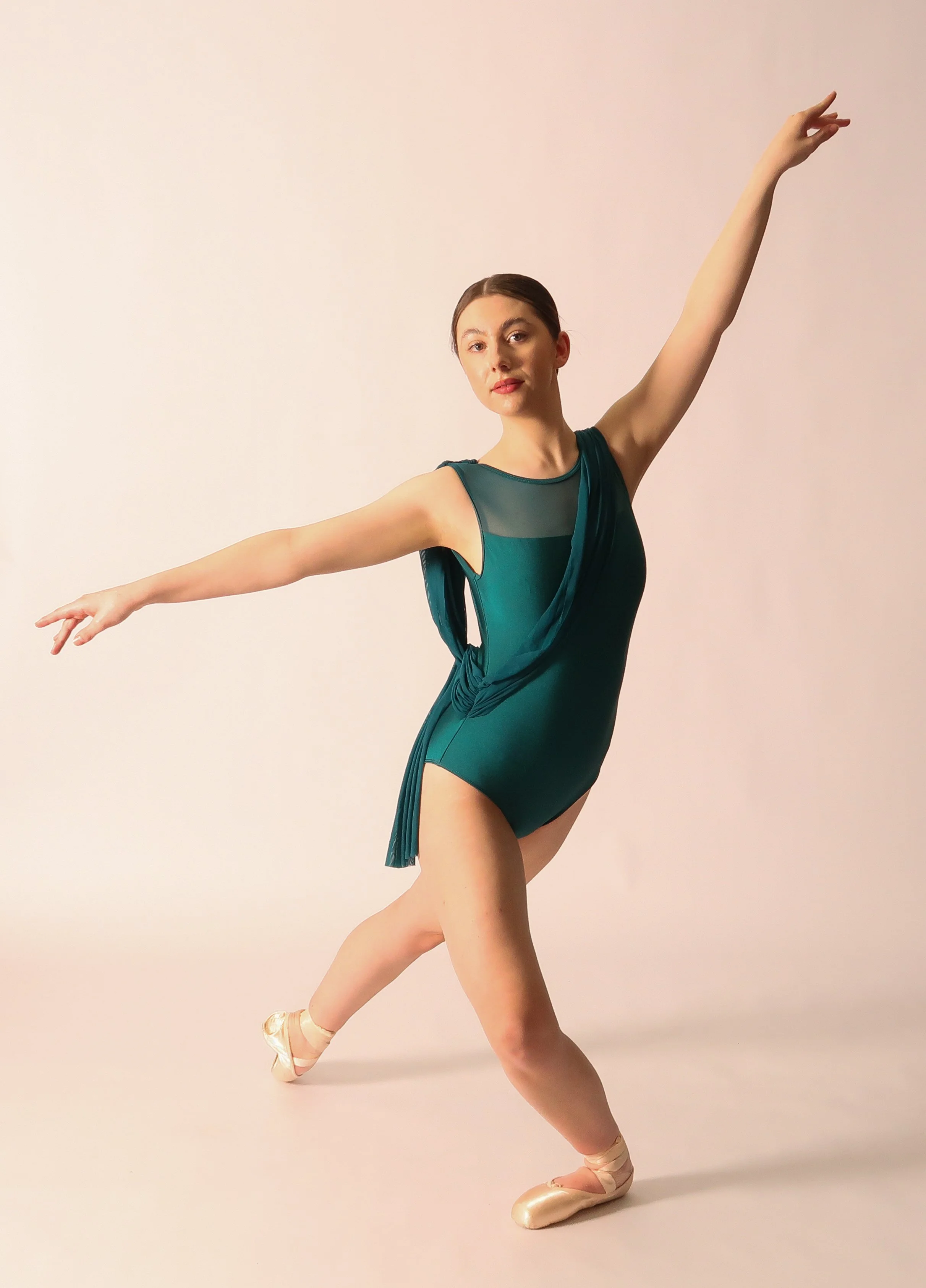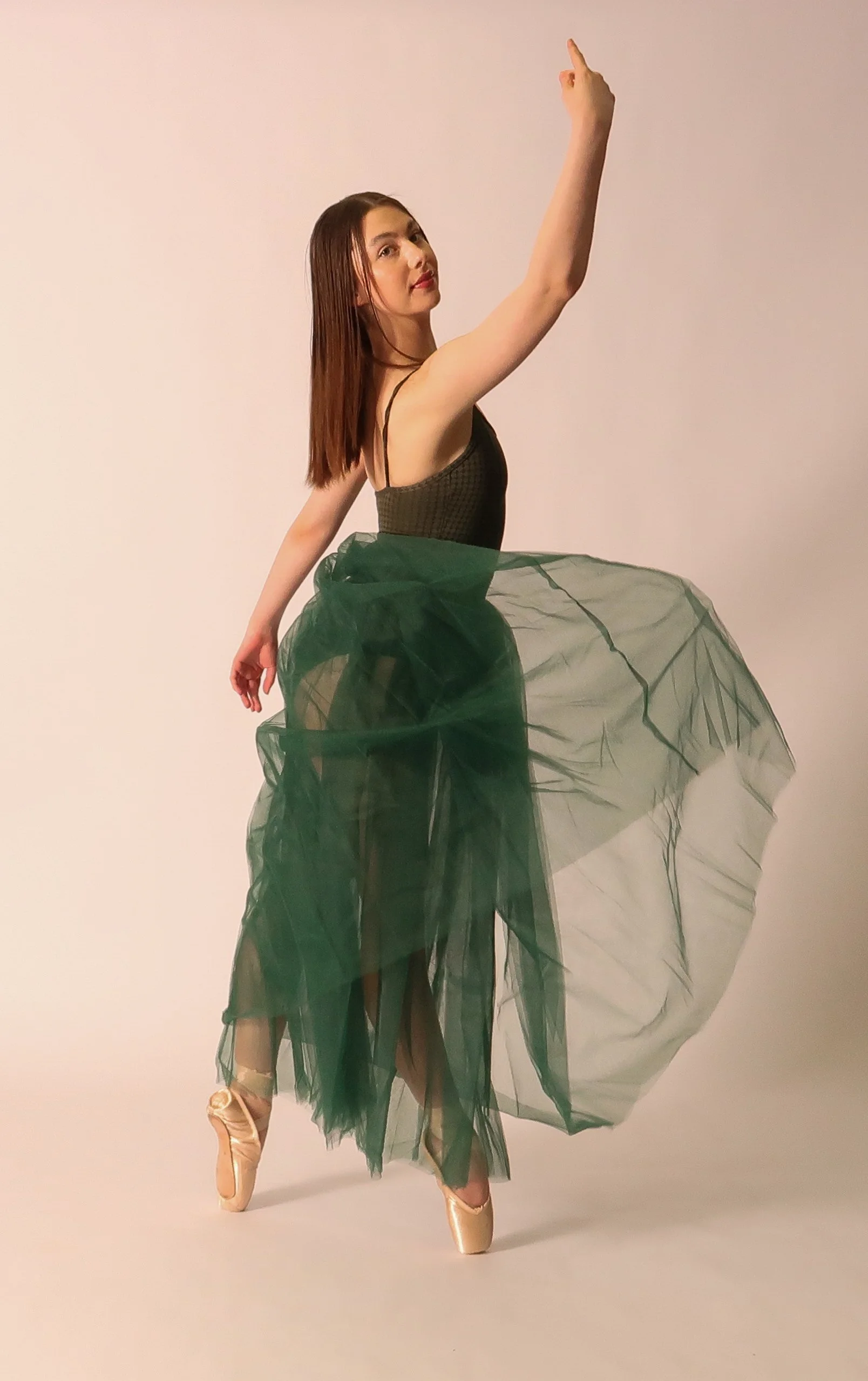Ballet Things That Shocked My Students In 2024
When entering a new year, we tend to reflect on what has passed. So for today's blog I wanted to reflect on some of the things my students learnt in 2024 that SHOCKED them.
When these shocking facts become reality for my students, and things begin to click for them, is when I really feel like a successful teacher. I teach for those ‘Oh! I get it now!” moments.
In 2024, my students learnt how important posture is for ballet. What shocked them is how important that same posture is for everyday life. They learnt that implementing correct posture into their lives outside of the studio can help reduce joint pain and the potential for injuries, as most of dancers’ injuries occur outside of the studio.
My students also learnt how strong dancers really are and how strong they need to be if they want to be successful. What shocked them is that ballet dancers have to be just as strong as commercial dancers, and that they aren’t fragile. Gaining this strength is hard work, just like working for pointe, it takes consistent effort, practice, and being engaged in class.
Eliza Bartlett, NDC & CDS
Pointe isn’t as simple as putting the shoes on and standing on your toes. There were a lot of challenges my dancers faced during 2024 to improve their technique so they could get the shoes and then to continue working hard to improve their pointe work. I think some of them were a little shocked by how much work really goes into pointe.
The final thing that shocked and continues to shock my students is the importance of trusting their technique in order to improve, overcome challenges and achieve their goals.
Correcting Posture: Ballet’s Life-Changing Benefit
Any of my students would tell you that I’m obsessed with posture, because it’s so important! Not just in ballet, but your everyday life.
So many of my students in 2024 were shocked to know that there is a correct and healthy way to stand in ballet and that training to stand correctly can enhance their everyday lives outside the dance studio.
By the end of the year, some of them were even able to identify when they stood incorrectly throughout the day and how that affected their body later. Having this awareness and the technique to fix how they stood helped them to avoid back, hip, and knee pain later on.
Alright, so how should you stand? Let’s start with a little exercise, one that I do with all of my students, as young as 8 years old, at the start of every year:
Begin by laying on the floor on your back with your knees bent so your feet are flat on the floor - this is called rest position.
Now, tilt your tailbone to point towards the floor as far as you can*,you should have a large space between the floor and your back - this is an anterior tilt of the pelvis.
Next, tilt your tailbone so it points to the ceiling and your back is completely flat on the floor - this is a posterior tilt of the pelvis.
Continue rocking your hips from an anterior to posterior tilt, slowly making the tilt smaller each time until there is no movement - you should stop moving once you find your neutral spine.
Neutral spine can be slightly different for everyone but essentially, in this position there should be no strain in the lower back or the front of the hips or abdominals. Most people will have a natural S-curve in their lower back, and your hips should be inline with your shoulders - parallel to the floor.
Be careful not to overcorrect by standing with a posterior tilt, as this also can cause issues through the front of the hips
This neutral spine is essential for standing both in ballet and everyday life. This position is the safest and healthiest position for your spine. It removes unnecessary pressure through the hips and lower back, activates the core without gripping the muscles, and elongates the spine.
Pelvis shown from the back, labeled is the greater trochanter, coloured in red are the turnout muscles.
From here I ask my students to stand with their feet hip-width-apart and toes facing forward. Then I ask them to look at their knees whilst standing with a neutral Spine to check that their knees are facing forward. They should be able to draw a straight diagonal line from the center of their knees to the space between their 1st and 2nd toe.
If your knees are facing inwards, slightly rotate your legs by imagining the greater trochanter (see image) rotating outwards. Place your hands on either side of your hips, a little below your hip bones, and imagine rotating the top of the leg towards your hands.
If your knees are facing outwards, imagine your inside thighs are strong magnets and they pull towards each other. Now your knees should be facing forward, your hips should be under your shoulders and your spine nice and long. This is how we stand with correct and healthy posture.
The final key to improving your posture, and to avoid spraining your ankle next time you walk from the lollie aisle to the freezer section at Woolies, is to check that the arches of your feet are lifted when you stand or walk.
To do this, sit on a chair with both legs at a 90-degree angle, feet on the floor. It’s easier to focus on one foot at a time in the beginning. Imagine there is a little bee beneath the arch of your foot and you don’t want to squish it or get stung (whichever gives you more motivation). Lift the arch to avoid the bee and then relax the ankle again. By switching the muscles on and off, you learn how to control this part of your foot and in turn learn how to control the tracking of your feet and ankles when you walk, run, and stand.
At first, you may notice a little ligament at the front of your ankle turn on and pop up, eventually your aim is to perform this Doming exercise without that ligament turning on - this becomes more of a game of will-power than strength, so don’t give up, it is very achievable. Many of my students master this task in as little as 6 weeks.
Try focusing on how you're standing throughout the week, and notice how you feel by Sunday. If you give this a go let me know in the comments below and share what other results you find.
Injuries Beyond the Barre
We tend to only focus on our posture in ballet, how we are standing, are our hips under our shoulders, core engaged, and are our knees tracking correctly over our toes. It's in our everyday lives, when these cues aren’t in focus, that we get injured.
Have you ever been standing in a long line at the shops and suddenly “oh jeez, what is that sharp pain in my lower back!” - Yeah, me too. It’s because we aren’t focused on how we stand in our day-to-day life, how we sit at school or work, how we run down the street. I bet that when you were standing in that line you had all your weight on one leg and your hips tilted forward, putting extra pressure into your lower back and hips. Your hips probably felt pretty achy the next day and your lower back really stiff. The focus on healthy posture just isn't present outside of the studio and this is when injuries occur.
When the awareness of our posture is switched off, this is when we step off the sidewalk and roll our ankle because our ankle and the arch of our foot weren’t tracking properly. We get extreme stiffness and pain through the lower back from standing with our pelvis tilted. The front of our shoulders and chest get really tight from having our shoulders slumped forward. We dislocate our knees when simply walking because they didn’t track correctly over our toes.
This lack of focus on posture can lead to injuries and even lifelong consequences. For instance, I tend to stand with all my weight on my right leg and have stood like this for as long as I can remember. I now have a significant difference in the length of my legs which meant I had to get special Orthotics for my pointe shoes to level my hips and ensure my spine was safely aligned when dancing. It is also super awkward to close my longer leg into 5th from a tendu, and I often get pain in my right hip and lower back from standing and sitting.
If I corrected this posture earlier on and was consistent with implementing my ballet corrections in everyday life, my legs may not be quite as drastically different (as it is normal to be a little asymmetrical). Of course other factors played a role in this development, such as going on pointe too early (another story for another day), but this little change would have made a huge difference.
Now I have learnt how to stand correctly and be aware of my posture, I have also had to learn how to make adjustments in my dancing to accommodate my awkward leg lengths, but I have reduced the pain in my lower back significantly. So, it’s never too late to start focusing on your posture and see results!
The Strength Of Ballet Dancers
Okay, when this fact struck my students I had to laugh. As I trained at a pre-professional level for 6 years I thought this was pretty obvious, but apparently not. Ballet dancers are strong, very strong athletes!
The beauty of ballet is how much power and strength ballet dancers are required to get through hours of classes, rehearsals and shows everyday, and then to step on that stage and embody the delicate and graceful presence of a ballet dancer.
A perfect example is to watch the second act of Giselle. The dancers are required to embody delicate ghosts whilst, of course, maintaining their technique to be able to stand perfectly still for 20 minutes in the required position whilst the lead dancers perform a beautifully delicate, heart-felt pas de deux.
Or watch the dying scene in Romeo & Juliet. Honestly, in my opinion, one of the hardest things to master as a ballet dancer is acting out death. Because you need to show the audience the drama whilst still pointing your toes, engage and disengage your abdominals so that your partner can toss you around like a ragdoll and then place you en pointe with a strong supporting leg. The dancers who have the muscle control and technique to pull this off are phenomenal.
One of my favourite things to do in class is to stand with my arms in 4th arabesque and ask my students whether my arms look fragile and delicate, they often say yes. Then I ask them to try to push my arms down, and they can’t. This is then followed by asking them whether my arms still look fragile. You can see the confusion on their faces as they say something like “well yes, they look fragile, but we can’t move them. How does that work?” That is the beauty of ballet! We can hold ourselves up, perfectly strong, whilst depicting something else, whilst telling a story. If you can’t tell, that’s why I love ballet!
Another reason why I love teaching ballet is because I get to see my students' faces when this suddenly clicks for them. When they learn that they need to be strong in all styles of dance, including ballet.
The Work That Goes Into Pointe
Another lesson that shocked many of my students in 2024, was how much work actually goes into learning pointe work. It’s not as simple as putting the shoes on and standing on your toes.
But that is what makes pointe so rewarding! You put in all this hard work, and when it clicks, you truly feel like you’ve achieved something.
I think the transition from dancing in flat shoes to pointe shoes gets downplayed in the ballet world way too much. The transition to dancing on your toes is a pretty weird and scary feeling. So even mastering being able to stand en pointe with the correct technique takes work and is a big achievement that dancers deserve to be proud of.
It is really important that students have their posture under control before they go en pointe, and it’s even more important that teachers explain that pointe is hard work and prepare their students for what’s to come.
I have seen far too many teachers put dancers en pointe and then leave them to “figure it out.” In my opinion, it’s important to acknowledge and appreciate the hard work that goes into mastering pointe. Teachers who simply place kids en pointe because it’s the thing to do, diminishes the appreciation and downplays the hard work required to do pointe work safely.
Without the safety net of their technique, posture, hard work, dedication and motivation, most students hit a wall with their pointe work and feel they can’t improve any further than getting the shoes.
Acknowledging the hard work that goes into pointe work prepares students for what’s to come, what they are signing up for. It teaches them perseverance, it teaches them that skills don’t just magically become perfect. No matter who you are, you really have to work hard to master pointe.
Trust In Your Technique
Now this is something I wish I had learnt when I was still a student. In order to overcome challenges in dance, you must trust your technical foundation. Trust that your teachers have provided you with the information you need to master the skills you want to achieve.
Most students don't tend to connect the dots between the warm up or barre work and centre practice, learning tricks and hard skills. The barre and warm up are there to teach you the techniques you need to achieve the harder things. If you pay attention at the barre and trust your technique, that triple pirouette will come a lot quicker.
This is a big step when coming back from an injury, and I really wish I had a teacher there to tell me the same thing: Just because you are injured does not mean you suddenly forget all the technique you learnt beforehand. You learnt the fundamentals and the technique before, which means you can apply those things again in order to come back from your injury safely. Trust that you have learnt how to do the steps correctly in the past and that by following those same processes you can do them again.
When you take in your teachers' corrections and bring focus to the barre you build strong and trustworthy technique. When you trust your technique you build confidence in yourself and resilience for future challenges, setbacks, and for learning new skills.
Whilst the idea of trusting their technique still feels pretty alien to a lot of my students, by the end of 2024 most of them started to understand. If they bring that trust into 2025, Listen and engage in class, and build upon that trust, they’ll be unstoppable!
Concluding Thoughts
What did you learn in 2024? What new things shocked you?
In 2024, my students learnt how to correct their posture for ballet and how important that posture is outside of the studio to improve their overall health and avoid injuries. They learnt that the fitness required to maintain that posture is part of what makes dancers incredibly strong, they were shocked by how strong ballet dancers truly are, all whilst dancing gracefully.
Another shocking truth that probably surprises most dancers is how hard pointe work really is, but also how rewarding it feels when that hard work pays off. Finally, they are still learning to trust their technique, to bring what I teach them at the barre to their centre and pointe work. That by trusting their technique they can achieve whatever they set their minds to.
Let’s chat in the comments below, what shocked you in 2024, and what are you excited to learn this year?
-
Notice how uncomfortable this position is on the floor, most of you stand with your back in this position everyday.
Herrington (2010) found that out of 120 participants, 75% of females and 85% of males stood with an anterior pelvic tilt. So whilst it’s a very common way to stand, it doesn’t mean it’s the healthiest way to stand.
-
Herrington, L. (2010). Assessment of the degree of pelvic tilt within a normal asymptomatic population. Manual Therapy, 16(6), 646-648. https://doi.org/10.1016/j.math.2011.04.006






